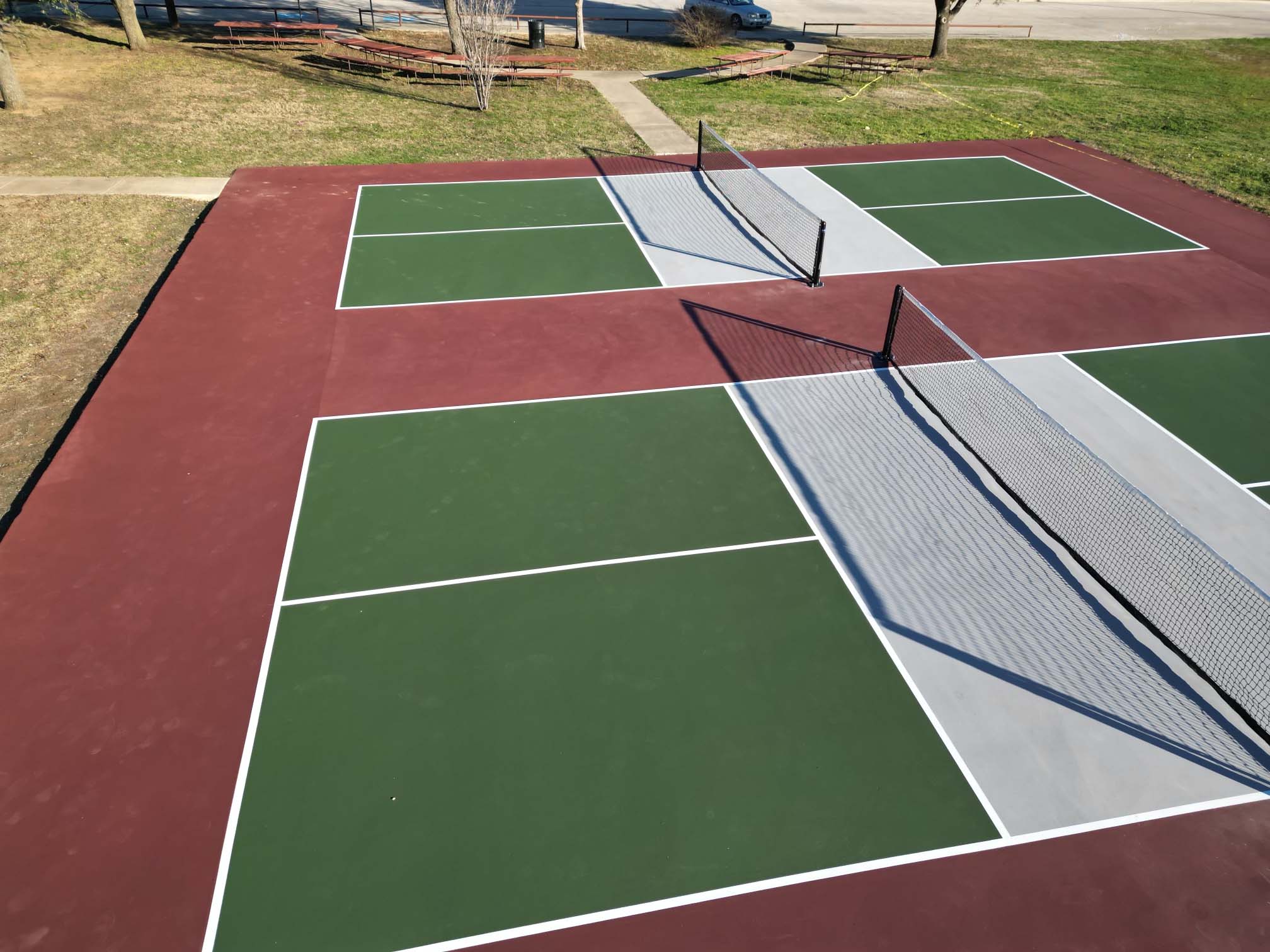Sustainable Practices in Pickleball Court Building You Need To Know
As the appeal of pickleball remains to climb, so as well does the requirement for lasting methods in court building. This strategy not just addresses ecological issues however also improves the durability and functionality of the courts. From picking environment-friendly products to executing effective water drainage and energy-saving lighting remedies, there are various methods to take into consideration. Yet, the effect of these methods expands far past the court itself. Recognizing exactly how each component adds to an extra lasting future welcomes better expedition right into the detailed equilibrium in between entertainment development and ecological stewardship.
Picking Eco-Friendly Products
Selecting eco-friendly products is an essential action in the construction of sustainable pickleball courts. The option of lasting products not only reduces ecological effect but also boosts the longevity and efficiency of the court. Trick products include recycled rubber for the surface area, which supplies exceptional durability and shock absorption while diverting waste from landfills.
Additionally, utilizing locally sourced products decreases transport emissions and sustains regional economies. Pickleball court construction. For example, making use of native hardwoods for fence and seating can provide a lasting visual while making sure strength versus the aspects.
Including absorptive products for court foundations can additionally add to sustainability by permitting natural water drainage and reducing overflow. These selections not just secure local ecosystems but additionally promote much healthier play atmospheres.
Efficient Drainage Solutions
While the selection of eco-friendly materials is crucial, implementing efficient water drainage remedies is just as important for preserving sustainable pickleball courts. Appropriate drainage not just secures the court surface area from water damage however likewise reduces disintegration and runoff, promoting environmental stability.
Effective water drainage systems can consist of absorptive paving, which allows water to infiltrate the ground instead of merging externally. This minimizes the likelihood of standing water, which can cause mold and other upkeep concerns. Furthermore, including tactically positioned drain networks and swales can guide excess water away from the court area, making certain a completely dry having fun surface area and preventing dirt disintegration.
Using native plant life in the landscaping around the courts can further boost drain by absorbing excess water and minimizing drainage. These plants need less irrigation and advertise biodiversity, lining up with sustainable practices.
Furthermore, it is critical to routinely maintain the drain system to ensure its long-lasting effectiveness. This consists of clearing up debris and monitoring for blockages. By prioritizing effective drainage remedies, pickleball court fitters can dramatically contribute to the sustainability and longevity of the facility, eventually benefiting both players and the atmosphere.
Energy-Efficient Lights Options
As the need for pickleball remains to grow, incorporating energy-efficient lights choices into court design has ended up being significantly important for sustainability. Standard lighting systems commonly consume excessive energy, contributing to higher functional costs and environmental influence. For that reason, embracing contemporary, energy-efficient innovations is important for both brand-new constructions and improvements.
LED (Light Emitting Diode) illumination attracts attention as a top option because of its durability and power financial savings (Pickleball court construction). Compared to conventional illumination, LEDs utilize roughly 75% much less energy and can last approximately 25 times much longer, substantially lowering upkeep expenses. The directional nature of LED illumination reduces light pollution, guaranteeing that lighting is focused on the court instead than bordering locations.
Sustainable Surface Area Alternatives
Discovering lasting surface choices for pickleball courts has gained traction amongst building contractors and gamers alike. The emphasis on green products not only lines up with the expanding environmental recognition however additionally improves the performance and durability of the courts.
This material supplies outstanding shock absorption, decreasing the danger of injuries for gamers while promoting sustainability. These ceramic tiles are very easy to replace and mount, and their versatility enables for various court setups.
Natural lawn courts are additionally becoming a sustainable selection, advertising biodiversity and minimizing the warm island impact. They call for routine maintenance and water, which might not line up with all sustainability goals.

Water Preservation Methods

An additional efficient method includes the setup of rainwater harvesting systems. These systems accumulate and store rain for use in preserving court surface areas and landscaping. This approach not just saves drinkable water but additionally decreases reliance on metropolitan sources.
Furthermore, using drought-resistant landscaping around the courts is vital. Native plants call for less water and are much better adjusted to local climate problems, hence reducing overall water intake. Additionally, making use of have a peek at this website efficient irrigation systems, such as drip irrigation, makes sure that water is provided directly to plant roots, decreasing evaporation and waste.
Final Thought
Integrating sustainable methods in pickleball court building substantially contributes to environmental conservation and resource performance. Making use of eco-friendly materials, implementing reliable water drainage options, and embracing energy-efficient illumination options can significantly reduce ecological influence. Moreover, checking out sustainable surface area choices and utilizing water conservation strategies boost the general sustainability of these recreational facilities - Pickleball court construction. By prioritizing these methods, the building and construction of pickleball courts can line up with more comprehensive environmental objectives while promoting long life and functionality within communities.
As the popularity of pickleball continues to rise, so too does websites the need for sustainable methods in court building and construction.Choosing environmentally friendly materials is a critical action in the building and construction of sustainable pickleball courts. By prioritizing energy-efficient lights alternatives, pickleball court constructors can add to a much more sustainable future while meeting the needs of gamers and stakeholders alike.Including sustainable surface choices not only Click This Link enhances the performance of pickleball courts but additionally leads the method for applying effective water preservation methods.Integrating sustainable methods in pickleball court building and construction dramatically adds to ecological conservation and resource performance.
Comments on “Specialist Pickleball Court Construction-- From Design to Setup”